Working with "SELTies" and "Woodlums"
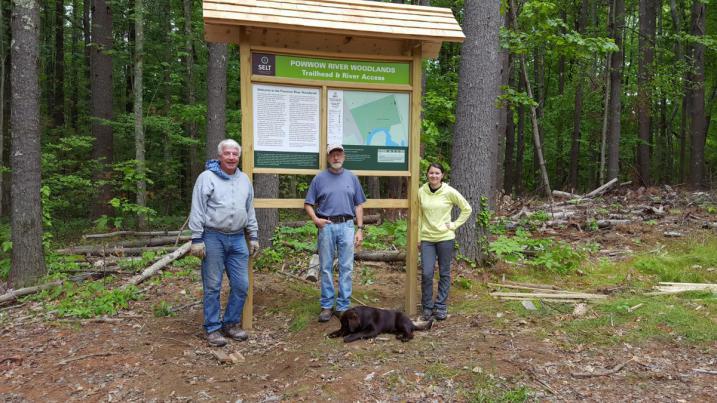
Southeast Land Trust (SELT) gave me a warm welcome to their crew by inviting me to their annual meeting at Flag Hill Winery and Distillery in Lee. An evening full of food, laughter, and awards, it was a great introduction to SELT's work, and it was clear to see their passion for land conservation. Phil Auger, SELT's land manager, introduced me to the staff throughout the evening. What a fun way to start off my internship!
I worked with Phil for my week with SELT, during which I had the privilege of seeing many of their beautiful properties. We started with trail work at the Powwow River Woodlands in South Hampton, where we prepared the area for its grand opening to the public. The trail is a short loop that leads to a cleared area along the river for canoers and kayakers. I pulled up invasives that were crowding the area--mostly honeysuckle, Japanese barberry, and burning bush. We also built ramps for the bridge along the trail and installed signs into the kiosk to give some history of the property and a map of the trail. We had Sherman, one of the volunteer's chocolate lab puppies, to help us with our trail work for the week! He also came to help us build ramps at a property along Mast Road in Epping.
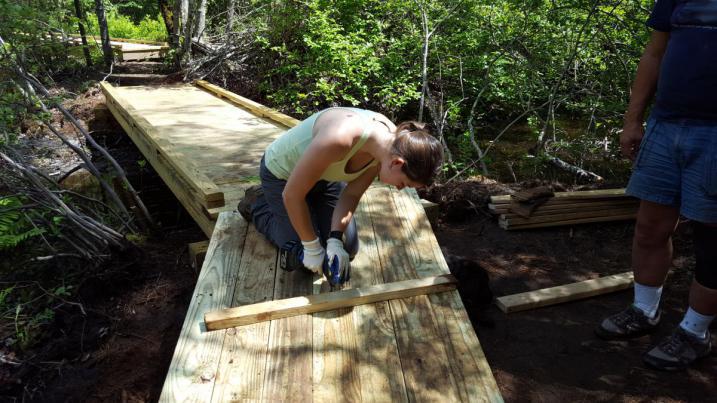
Here, we worked on a handicapped-accessible trail that travels through a young forest, over a beaver pond, through a sandy clear cut, and along the edge of a open field that seemed to always be full of wild turkeys. SELT plans to hold a grand opening for the trail later this summer, and I recommend checking it out! Property details and trail maps are on the SELT website!
Phil took me to many more properties, always giving me the full history of the land and their plan for it, and of course pointing out wildlife. We showed a UNH grad student around to some shrubby areas on SELT property where he could tag birds for his shrubland bird research. We also did some boundary work, where we tagged the boundary line and posted signs with SELT's emblem on them. We used a compass and map to find each boundary point and then tagged the point using GPS. The town line boundaries are marked by an old stone monument, with letters on each face to indicate the town name--a fun piece of history to find!

On another property, we planted seed to fill in a large field, to give the property some habitat variation, food, and shelter for wildlife. I also had the opportunity to accompany Phil to a 500-acre forest on Evan's Mountain in Strafford, where we met with wildlife biologists and foresters in the area to combine their expertise in developing a long-term management plan for whip-poor-whills on the property. As a former forester, Phil also thought it would be fun to take me to a timber harvest to show me the machinery and how the process works. He told me what trees were worth depending on the size, shape, and species. He also explained how a timber harvest progresses from start to finish--from forester to logger, to buyer.
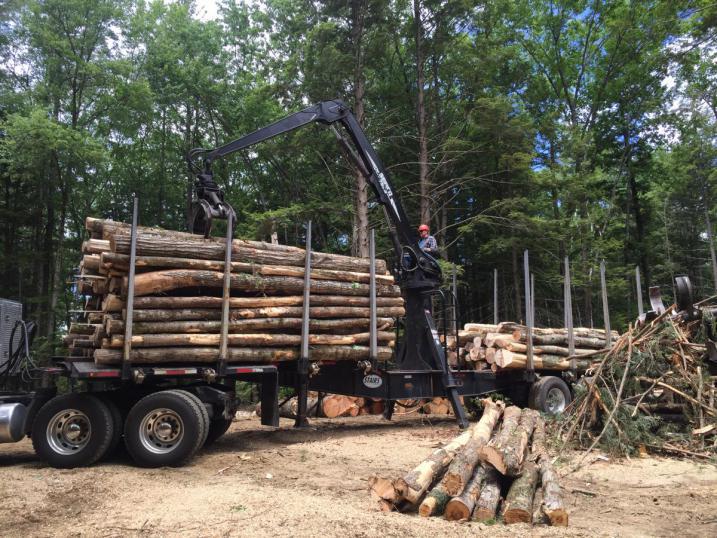
Phil and I started and ended most days at the Burley Farm in Epping. This is a favorite spot of mine, where the Burley family house and barn sits atop a hill overlooking smooth fields that flow into the Burley forest. The family sold the property to SELT, knowing it would be in good hands! SELT has plans for public trails, allowing it to be enjoyed by all!
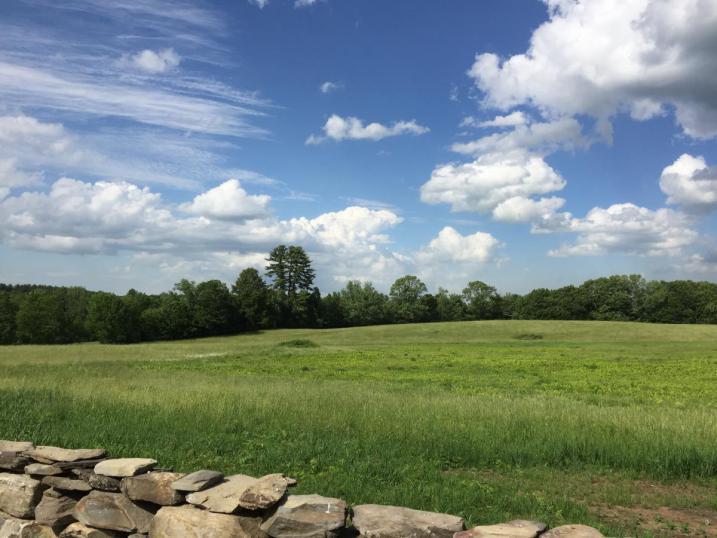
After leaving Phil and the wonderful crew at SELT, I spent two weeks with the UNH Office of Woodlands and Natural Areas. I worked with Steve Eisenhaure, the land use coordinator, and his team of three students, who refer to themselves as the "woodlums." We started with Continuing Forest Inventory (CFI), in the MacDonald lot near East Foss Farm. In 2006, Steve worked with another team to start this project. Our job was to find each point in the sampling grid, and collect data on the plot to compare with the data from 10 years ago. At each point we set up a main plot with four subplots. In the main plot, we took an inventory of the mature trees in the stand. In the subplots, we identified and counted the regenerating plants. This job took us from a young forest, through a messy swamp, into a thicket of buckthorn, and back out to a quiet old growth forest with towering white pines and red oaks. We would sit in a circle for lunch and Steve would quiz us on vegetation species and ask our opinions on managing the forest surrounding us.
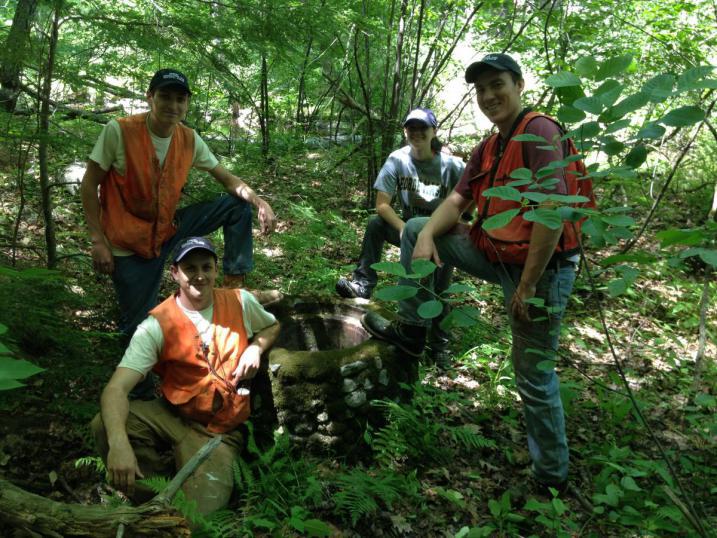
After a few days completing the MacDonald lot project, we traveled up to UNH property on Rattlesnake Mountain near Squam Lake to install split rail fences to discourage use of older trail routes. Huffing and puffing, we carried the rails and posts up the trail, following Steve who took twice the load without any trouble! The trail was busy on such a hot day, and every hiker we passed thanked us for our work. We had quite a view during lunch on the summit, overlooking the lake.
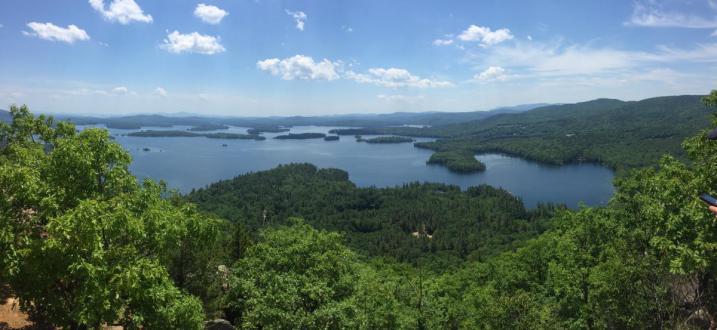
We also built and installed two beaver pipes in West Foss Farm to prevent flooding. Many people who face beavers around their property will try to trap and move the beavers, but that method does not always work. Beaver pipes allow us to control the water level while still allowing the beaver to stay in the area. The beaver pipe consists of PFC pipe that runs through the dam. The intake pipe on the inside of the dam has holes drilled into it to collect the water, with a metal cage wrapping around it to prevent debris from blocking up the holes. The pipe on the outside of the dam bends up and out of the water with different sized sections that can be removed or added depending on the desired water level. We drilled the holes, wrapped the wire around the intake, fit the sections together, and ran it through the dam.

Steve used a skidsteer to clear out space in the first dam to install the pipe, and to cover it over with dirt and stone when we were finished.

I'm happy I had the opportunity to work with two great teams, both putting in a lot of hard work to conserve and maintain our New Hampshire land. My first few weeks have been a lot of fun! It'll be tough to leave the SELTies and the woodlums! I'll be working with Bear-Paw Regional Greenways, NH Fish & Game, and Trailfinder in the coming weeks!